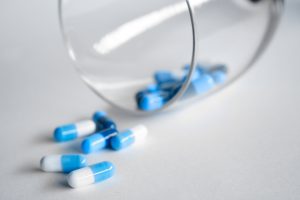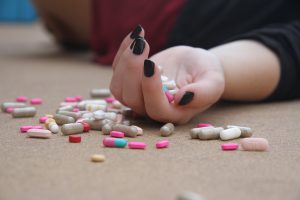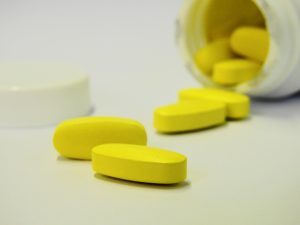
Sometimes it can be difficult to tell if a person is just very high, or experiencing an overdose. The following will present some information on how to tell the difference. If you’re having a hard time telling the difference, it is best to treat the situation like an overdose – it could save someone’s life.
What are opioids?
According to the U.S. National Library of Medicine, opioids, sometimes called narcotics, are a type of drug. They include strong prescription pain relievers, such as oxycodone, hydrocodone, fentanyl, and tramadol. The illegal drug heroin is also an opioid.
A health care provider may give you a prescription opioid to reduce pain after you have had a major injury or surgery. You may get them if you have severe pain from health conditions like cancer. Some health care providers prescribe them for chronic pain.
Prescription opioids used for pain relief are generally safe when taken for a short time and as prescribed by your health care provider. However, people who take opioids are at risk to have a pain pill addiction, as well as an overdose. These risks increase when opioids are misused. Misuse means you are not taking the medicines according to your provider’s instructions, you are using them to get high, or you are taking someone else’s opioids.
What is an opioid overdose?
Opioids affect the part of the brain that regulates breathing. When people take high doses of opioids, it can lead to an overdose, with the slowing or stopping of breathing and sometimes death.
What causes an opioid overdose?
An opioid overdose can happen for a variety of reasons, including if you
- Take an opioid to get high
- Take an extra dose of a prescription opioid or take it too often (either accidentally or on purpose)
- Mix an opioid with other medicines, illegal drugs, or alcohol. An overdose can be fatal when mixing an opioid and certain anxiety treatment medicines, such as Xanax or Valium.
- Take an opioid medicine that was prescribed for someone else. Children are especially at risk of an accidental overdose if they take medicine not intended for them.
Who is at risk for an opioid overdose?
Anyone who takes an opioid can be at risk of an overdose, but you are at higher risk if you
- Take illegal opioids
- Take more opioid medicine than you are prescribed
- Combine opioids with other medicines and/or alcohol
- Have certain medical conditions, such as sleep apnea, or reduced kidney or liver function
- Are over 65 years old
What are the signs of an opioid overdose?
The signs of an opioid overdose include
- The person’s face is extremely pale and/or feels clammy to the touch
- Their body goes limp
- Their fingernails or lips have a purple or blue color
- They start vomiting or making gurgling noises
- They cannot be awakened or are unable to speak
- Their breathing or heartbeat slows or stops
“Opioid antagonist”
 According to the U.S. National Library of Medicine, Naloxone (also known as Narcan) is a medication called an “opioid antagonist” used to counter the effects of opioid overdose, for example morphine and heroin overdose. Specifically, naloxone is used in opioid overdoses to counteract life-threatening depression of the central nervous system and respiratory system, allowing an overdose victim to breathe normally. Naloxone is a nonscheduled, prescription medication. Naloxone only works if a person has opioids in their system; the medication has no effect if opioids are absent. Although traditionally administered by emergency response personnel, naloxone can be administered by minimally trained laypeople, which makes it ideal for treating overdose in people who have been prescribed opioid pain medication and in people who use heroin and other opioids. Naloxone has no potential for abuse. Naloxone may be injected in the muscle, vein or under the skin or sprayed into the nose. It is a temporary drug that wears off in 20-90 minutes.
According to the U.S. National Library of Medicine, Naloxone (also known as Narcan) is a medication called an “opioid antagonist” used to counter the effects of opioid overdose, for example morphine and heroin overdose. Specifically, naloxone is used in opioid overdoses to counteract life-threatening depression of the central nervous system and respiratory system, allowing an overdose victim to breathe normally. Naloxone is a nonscheduled, prescription medication. Naloxone only works if a person has opioids in their system; the medication has no effect if opioids are absent. Although traditionally administered by emergency response personnel, naloxone can be administered by minimally trained laypeople, which makes it ideal for treating overdose in people who have been prescribed opioid pain medication and in people who use heroin and other opioids. Naloxone has no potential for abuse. Naloxone may be injected in the muscle, vein or under the skin or sprayed into the nose. It is a temporary drug that wears off in 20-90 minutes.
Opioid addiction treatment
Treatment for opioid addiction is different for each person. The main goal of treatment is to help you stop using the drug. Treatment also can help you avoid using it again in the future.
When you stop using opioids, your body will react. You will have a number of symptoms that may include nausea and vomiting, abdominal pain, and anxiety. This reaction is called withdrawal.
Your doctor can prescribe certain medicines to help relieve your withdrawal symptoms when you stop using opioids. They also will help control your cravings. These medicines include methadone (often used to treat heroin addiction), buprenorphine, and naltrexone.
Methadone and buprenorphine help reduce withdrawal symptoms by targeting the same centers in the brain that opioids target. Only they do not make you feel high. They help restore balance to your brain and allow it to heal. According to the National Institutes of Health (NIH), you may safely take the medicines long term, even for a lifetime. You should not quit them without first telling your doctor.
Naltrexone is another medicine your doctor may prescribe. This medicine doesn’t help you stop taking opioids. It is for helping prevent you from relapsing. Relapsing means to start taking opioids again. This medicine is different from methadone and buprenorphine because it does not help with cravings or withdrawal. Instead, according to NIH, it prevents you from feeling the high you would normally feel when you take opioids.
Medicine can help with your physical addition to opioids. But you may also need help with your mental or emotional addition to opioids. Behavioral treatments can help you learn how to manage depression. These treatments also help you avoid opioids, deal with cravings, and heal damaged relationships. Some behavioral treatments include individual counseling, group or family counseling, and cognitive therapy. Ask your doctor for a recommendation.
If you are looking for a good recovery center, consider Continuum Recovery Center – a Phoenix-based recovery center that provides quality care through evidence-based, comprehensive drug and alcohol treatment and supports long term recovery, is the backdrop to every aspect of our service offerings. A safe yet strong environment that continues to reset ethical standards positioned in dedication, honesty, integrity, and reliability.
